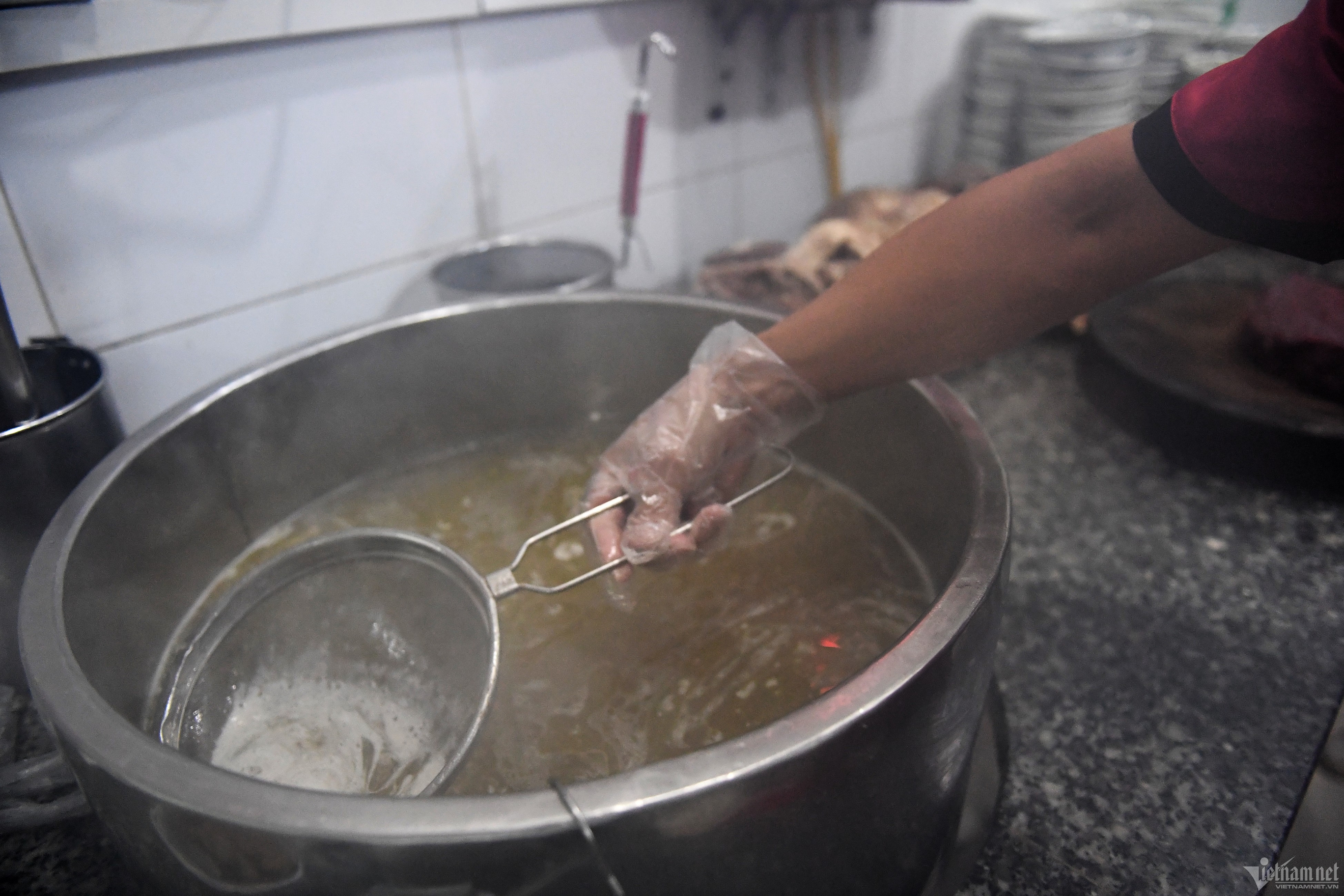
Making and selling pho for the last seven decades, Co Viet Hung wishes to see the traditional dish become popular all over the world.
Nam Dinh pho has helped locals earn a living and earn a lot of money.
“I followed my father to peddle pho in Hanoi since 1946. Thanks to the sales, my father could earn money to buy two land plots in my hometown,” Co recalled.
More and more descendants of Van Cu village have left for other localities to sell pho and become rich. They can buy big houses and cars in large cities, and then return to the hometown to build spacious houses for their parents.
Van Cu village is getting more beautiful with more multi-storey houses and cars. Co feels happy and grateful to the ancestors who handed down a good career to the next generations.
Co is now the oldest man of the Co family in Van Cu village. But he still thinks about what he should do to protect the Nam Dinh pho brand.
“I tell young people in the village to register the brand to have the traditional dish protected. I sometimes see the pho shops with signboard ‘Pho Co’ (Co’s pho) and I ask the owners who their parents are. The owners admit that they hung the signboard to boost sales,” he complained.
He began thinking of protecting the pho brand 10 years ago. A big hotel invited him to teach its cooks how to make pho. However, Hung refused the invitation despite the attractive offer. He confided that he doesn’t want to see the recipe of pho of Van Cu village become a brand bearing other people’s and other countries’ names.
Artisan Le Thi Thiet, chair of the Nam Dinh Culinary Culture Association, is also a person who has passion for the traditional dish of pho. She thinks about how to disseminate Vietnamese culinary culture and popularize Vietnam’s pho.
She believes that joint efforts between the generations of the pho village and state agencies are needed to preserve and promote the long-standing value of pho.
“Many people make pho and sell pho in many localities throughout the country and even in foreign countries. But no one has come forward and protected the pho brand. There are also no standards for pho for different regions,” she said.
To date, only standards for Nam Dinh pho have been set, and the development orientation for Nam Dinh Pho has been figured out in order to turn the traditional dish into a product attractive to travelers.
Travelers to Nam Dinh experience a food tour, tasting Nam Dinh’s specialties, including pho. They experience craft villages and listen to stories about pho.
“I hope we can export packaged pho to other countries, but this is pho to be made by locals in craft villages, the pho that bears the Vietnamese ‘soul’, not the one like instant products available in the market now,” Thiet said.
Nguyen Van Thu, director of the Nam Dinh provincial Museum, said everyone knows pho, but there has been no State official legal recognition about the dish.
There are many delicious dishes sourced from Nam Dinh, including three dishes honored among 100 Vietnamese dishes, namely Nam Dinh pho, Siu Chau candy and bun dua (vermicelli and sour crab soup).
In 2021, the Nam Dinh Culinary Culture Association, a social organization, which together with agencies, suggests solutions to preserve and promote culinary and cultural heritage, especially the specialties of the province.
Vu Lua - Lam Giang